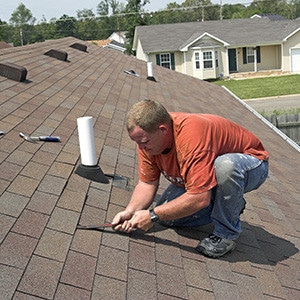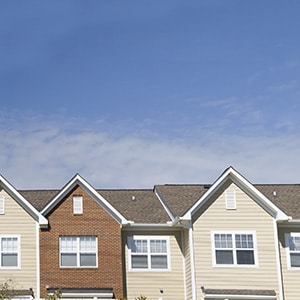
Should I Replace Or Repair My Roof?
— January 5, 2015The time has finally come to consider what to do with your roof, and you’re wondering what would be the best and most cost-effective decision in the long run. A variety of circumstances could have brought you to this point, ranging from storm damage to bringing your house up to speed to put it on the market. Whatever the case may be, the question remains: Should you replace or repair your roof?
Various Options
Each circumstance is different and there are remedies that fit better than others when you want to save money while, at the same time, ensuring the lasting functionality and value of your roof. Here are the important things to consider before you commit to any course of action.
Repair
Replacing shingles is obviously the easiest and most cost-effective option. This is practical when there are only a small amount of shingles that have been torn off or damaged, for whatever reasons, the most common being some form of weather damage or fallen branches. These shingles can easily be pulled off and replaced. The best part of this option, however, is extending the life of your roof for another 10 to 15 years with only minor repairs.
The only drawback may be in the look of your roof. You want to replace the shingles with their exact match or something that comes as close as possible. The difference may not be especially noticeable, but if you’re planning on selling your house, it may be the difference that causes the potential buyer to pause and reconsider. If the damage is concentrated in one area and the shingles are not the best match, a patch-up job may then become very noticeable.
Partial Reroofing
Partial reroofing involves repairing damage that’s more severe, but concentrated in one part of the roof. For the most part, this will be less expensive than replacing the whole roof, but can create problems when matching the old with the new. With asphalt roofs, layers will have to be removed in order to lay down the new materials and repair the damaged area. This may create a slight variance in the leveling of the roof from old to new that may result in lopsided ridges. Increased cost may come in the form of labor, disposal costs and the cost of the job on a per square basis.
A Complete Replacement
A complete replacement may be more cost-effective in the long run when considering important variables. If you’re planning on a partial reroofing, but the roof itself is nearing it’s life expectancy, it just may be better and less expensive to replace the whole thing at one time, rather than doing one part now and the other part later. Since you already have a job that needs to be done, doing it altogether will minimize the drawbacks of a partial reroofing job.
If you live in a area that’s vulnerable to harsh weather conditions, it’s important think about your roof’s vulnerability to any resulting damage which can occur. Even if your roof has not shown major signs of wear and tear and/or is reaching its life expectancy, replacing your roof with more durable, up-to-date materials may bring added protection from future damage caused by severe weather. Heavy-duty shingles secured with six nails over lightweight shingles secured with four may keep a “roof over your head” and be the difference between security and headache, inconvenience or worse caused by major storm damage.
One Final Consideration
When replacing a roof, you need to consider whether or not to tear off the old roof and start from scratch or lay down the new roof over the existing one. It may seem easier to lay the new over the old, but it may be better and more cost-effective to take the time to pull off the old and start over completely.
There are a few reasons which make this a better option. For one thing, if you already have a roof that’s composed of two existing roofing applications, it’s mandated that you cannot overlay another application on top of them, due to the increased weight on the structure of the house. You would have to replace it anyways. A second reason is that shingles adhere to the base of the roof deck much more effectively than a previous layer of roofing application. In the long run, this may save you time and money on future repair jobs. A final reason is that any kind of damage to the roof deck could be more clearly seen and dealt with when the previous roof applications have been pulled away to reveal its true condition. If you have any questions in regards to this, check out lionheartkc.com and search the site. Hopefully this helps.



Leave a reply